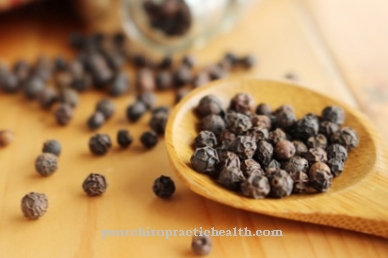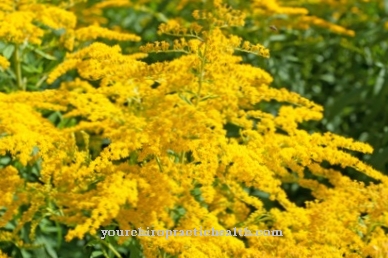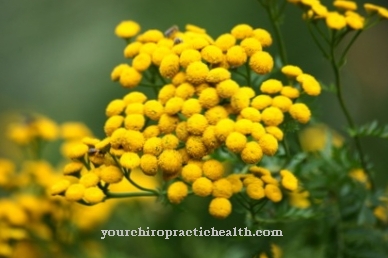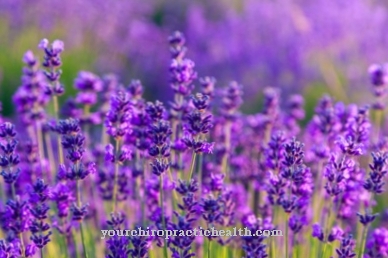The myrrh is a resin that is obtained from the trunks of the balsam tree family. This resin has been an important part of personal hygiene, pharmaceutical production, and the culture of various countries and ancient empires for several thousand years. Since the plants required for this mostly only grow in tropical or Mediterranean areas, myrrh is often an important economic factor in countries with suitable vegetation.
Occurrence & cultivation of myrrh

The use of myrrh was already an integral part of burial culture in ancient Egypt over 3000 years ago. The sticky and solid resin was used in embalming and as incense at funerals. The great world religions such as Judaism and Christianity also used myrrh from the beginning as an additive for their dead and in the context of cultic anointings.
Myrrh was also widely used as an aphrodisiac, as well as a remedy for many other ailments. In the context of ancient healing, myrrh was so important that the highest prices were paid for this raw material in the ancient Roman Empire. If the harvest was bad, myrrh was at times more valuable than gold and already an important status symbol for rich and wealthy people in the ancient world.
The myrrh is taken directly from the living wood of the balsam tree, mostly des Commiphora Myrrha. It is important not to damage the tree when taking it, because only with appropriate care and expert treatment can a balsam tree produce high-quality resin over several years. To collect the resin, a notch is carved in the tree and a collecting container is placed under it.The resin flows directly into the collecting container and can be passed on for processing. Since the trees mainly grow in tropical regions, myrrh is one of the most important economic goods in the third world today. Large growing areas can be found in Somalia and other African countries, for example. The advantage of production is that the dried resin does not require any further processing and can be used directly.
Application & effect
Depending on its use, myrrh has different effects and can therefore be used in many ways. Usually treatments with myrrh or extracts from it are part of natural medicine. Due to its versatility and the good results, the resin is now also used more frequently in conventional medicine. The application in medicine can be divided into two sub-areas:
Externally, myrrh is often used for inflammatory diseases of the oral mucosa. The resin has an inhibiting effect on inflammation and disinfects the sore areas over a large area. The application also promotes scarring. Myrrh also has a hemostatic, antispasmodic and calming effect and is therefore used more often for intestinal diseases.
For internal use, the chewed myrrh (very bitter) has been shown to be beneficial for bronchitis and intestinal inflammation. Chronic intestinal diseases such as Chron's disease can be demonstrably treated more effectively with myrrh than with conventional products of conventional medicine.
Another form of external application can be done by lighting and smoking the myrrh. Here, however, it should be ensured that it is better to refrain from using it in the case of colds and bronchitis, as the smoke heavily loads the pores and airways. On the other hand, the smoked resin has been shown to have a calming and relaxing effect and, when dosed correctly, gives off a pleasant and soft scent. Less is more - if too much is added, the scent quickly turns into an unpleasant and pungent odor.
Because of its pleasant smell, myrrh has always found its way into many perfumes and toiletries. Here, the sticky resin is used more as a fixing material. The scent obtained from the oil, on the other hand, is often found in the top note and is particularly popular in Arab and Far Eastern countries. It is obtained with the help of the water distillation process. Due to its velvety and soft note, it is also used as a basic component in many western perfumes in the upper price segment.
Importance for health, treatment & prevention
Myrrh has seen a real revival in the last few decades. It used to be a pleasantly scented incense, but today it is an important part of many alternative and conventional medical treatments.
However, compared to other domestic medicinal products such as nettle or fennel, it is quite expensive because its cultivation and extraction are complicated and time-consuming. In particular, the plants from which the resin can be extracted repeatedly pose challenges for breeders.
Although they are easy to care for and undemanding, they are always surprisingly sensitive to breeding attempts that aim to increase yield. Due to the increased demand in medicine, in the beauty scene and ultimately also by private users as a luxury item, it can be assumed that myrrh will continue to be one of the most popular home remedies worldwide in the future.
























.jpg)



